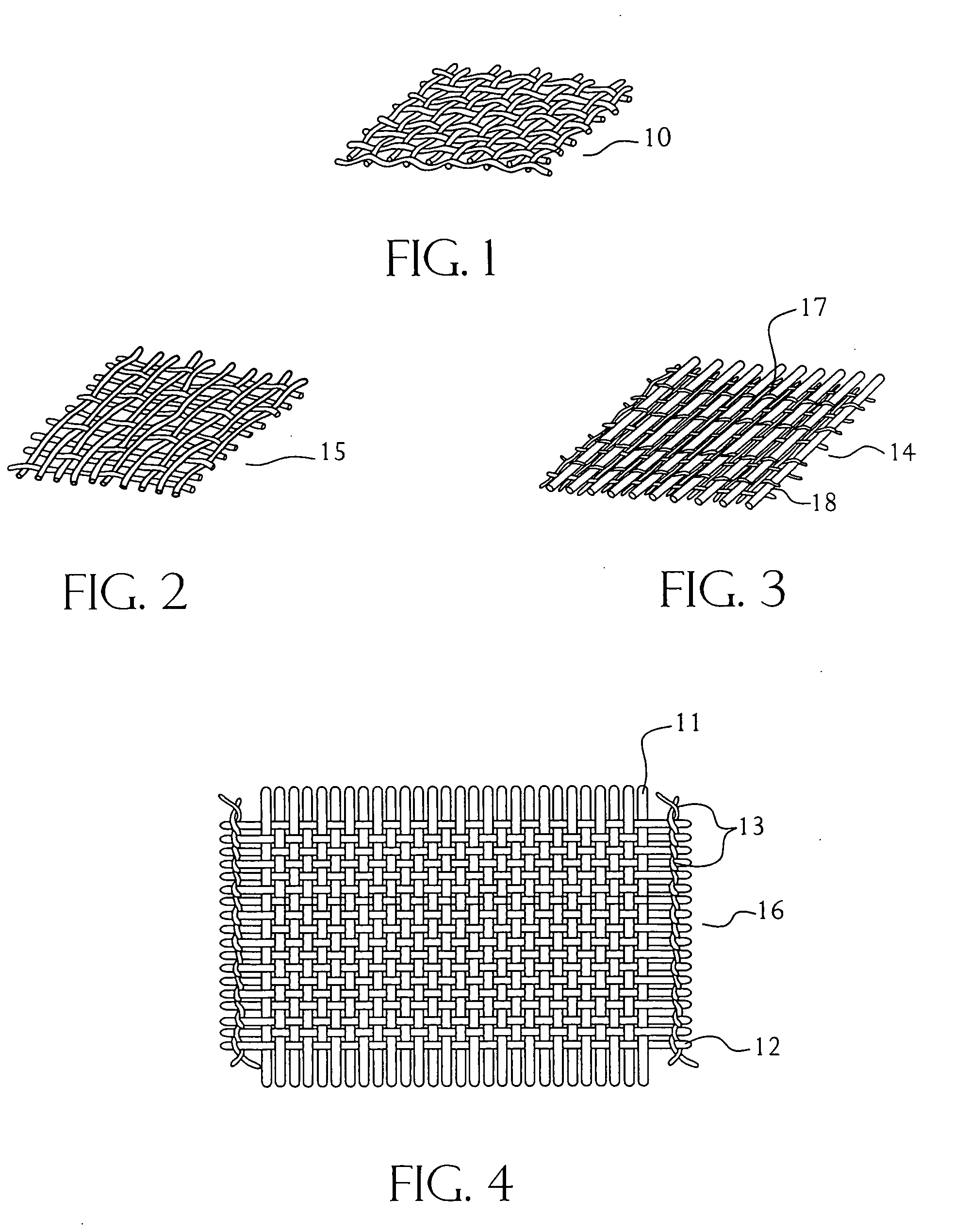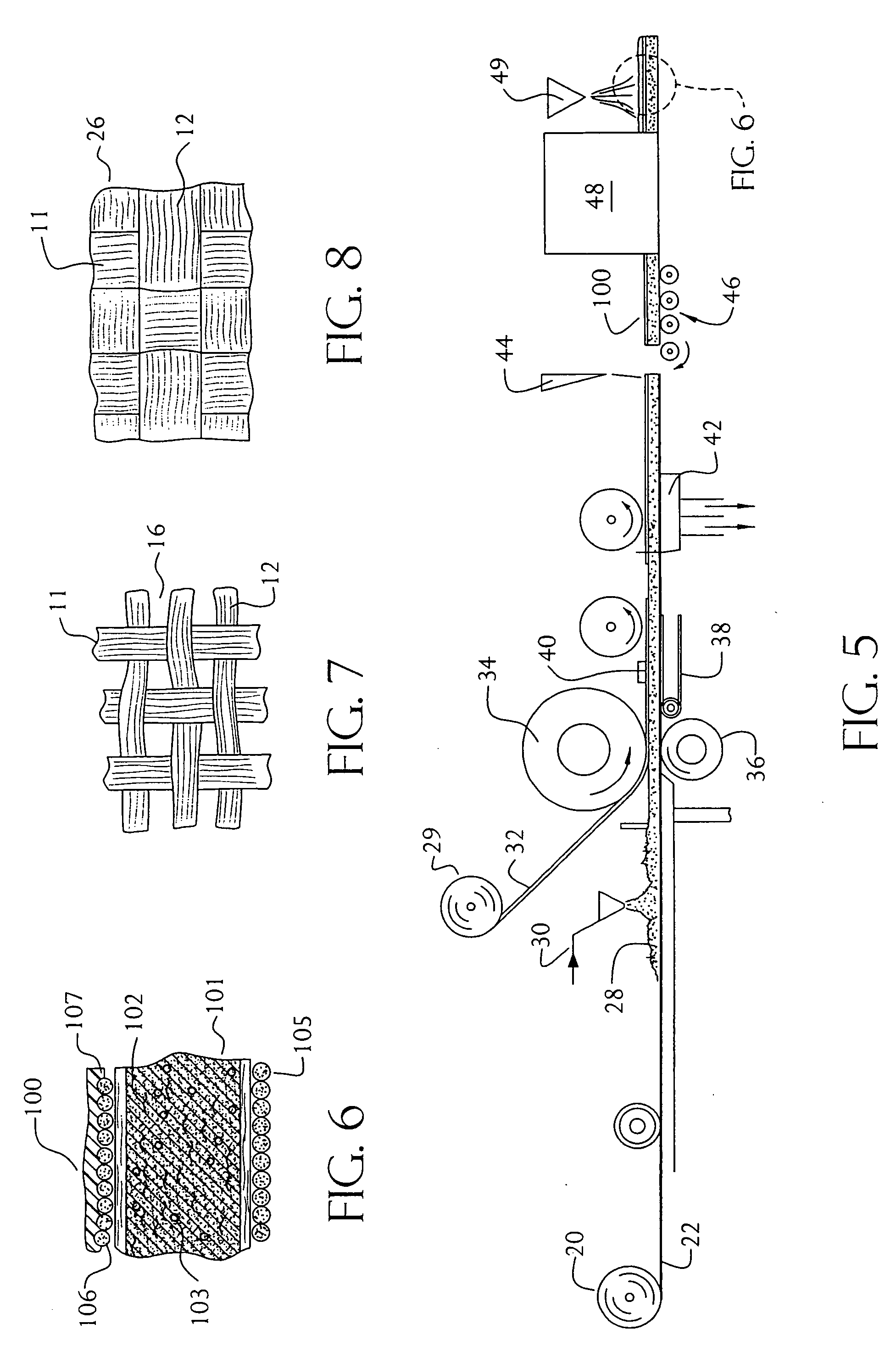Facing material with controlled porosity for construction boards
a technology of porosity and construction boards, applied in the direction of geotextiles, water-setting substance layered products, synthetic resin layered products, etc., can solve the problems of preventing paper from losing most of its strength, limiting the use of paper facing, and affecting the appearance of cementitious slurries,
- Summary
- Abstract
- Description
- Claims
- Application Information
AI Technical Summary
Benefits of technology
Problems solved by technology
Method used
Image
Examples
Embodiment Construction
[0054] With reference to the Figures, and particularly to FIGS. 1-4 thereof, there is depicted a series of fabrics useful as the facing layer of the preferred facing material of this invention. Needled, woven, knitted and composite materials are preferred because of their impressive strength-to-weight ratio and, in the case of wovens and knits, their ability to form weft and warp yarn patterns which substantially resist the penetration of cementitious slurries. While the facing layers of this invention can contain fibers and filaments of organic and inorganic materials, the most preferred fibers contain glass, olefin (such as polyethylene, polystyrene and polypropylene), Kevlar®, graphite, rayon, polyester, carbon, ceramic fibers, or combinations thereof, such as glass-polyester blends or Twintex® glass-olefin composite, available from Saint-Gobain Technical Fabrics, America, Inc. Of these types of fibers and filaments, glass compositions are the most desirable for their fire resist...
PUM
| Property | Measurement | Unit |
|---|---|---|
| diameter | aaaaa | aaaaa |
| tensile strength | aaaaa | aaaaa |
| tensile strength | aaaaa | aaaaa |
Abstract
Description
Claims
Application Information
 Login to View More
Login to View More - R&D
- Intellectual Property
- Life Sciences
- Materials
- Tech Scout
- Unparalleled Data Quality
- Higher Quality Content
- 60% Fewer Hallucinations
Browse by: Latest US Patents, China's latest patents, Technical Efficacy Thesaurus, Application Domain, Technology Topic, Popular Technical Reports.
© 2025 PatSnap. All rights reserved.Legal|Privacy policy|Modern Slavery Act Transparency Statement|Sitemap|About US| Contact US: help@patsnap.com



